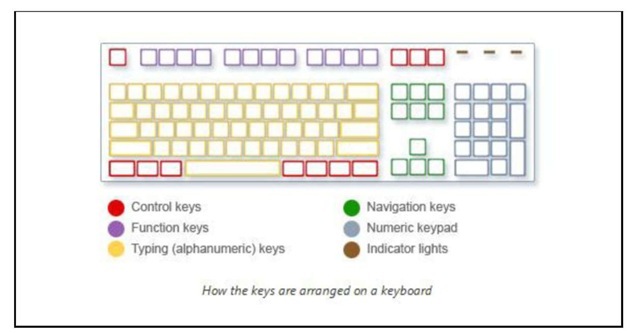Windows 7 includes a lot of new keyboard shortcuts that are unknown for a new user. This etopic comprises of more than 200 keyboard shortcuts containing almost all the keyboard shortcuts that are available in Windows 7 and its default programs. Keyboard shortcuts are amalgamation of two or more keys that when pressed together performs a task that would typically require a mouse or other pointing device. Keyboard shortcuts can make it easier to interact with your computer, saving your time and effort when you work with Windows and other programs.
Most programs also provide accelerator keys that can make it easier to work with menus and other commands available in the program for users. Check the menus of programs for accelerator keys. If a letter is underlined in a menu item, which usually means that pressing the Alt key in combination with the underlined key will have the same effect as clicking that menu item.
Pressing the Alt key in some programs, such as Paint, WordPad or MS Office 2007 shows commands that are labeled with additional keys that you can press to use them.
![tmp42-1_thumb[2] tmp42-1_thumb[2]](http://lh3.ggpht.com/_X6JnoL0U4BY/S77oEYiDB4I/AAAAAAAAWz8/phOOwezs-cI/tmp42-1_thumb%5B2%5D_thumb.jpg?imgmax=800)
What is Keyb0ard & how to USe it?
Whether you have to write anything like a letter or have to calculate numerical data, your keyboard is the main way to enter information into your computer. But did you know you can also use your keyboard to control your computer? Learning just a few simple keyboard commands (Shortcuts to your computer programs) can help you work more efficiently.
This key topic explains the basics of keyboard operation and gets you started with keyboard commands. Now let’s discuss about the fundamental aspects of a Keyboard.
How the keys are organized on a standard Keyboard
The keys on your keyboard can be divided into several groups based on their functions:
• Typing (alphanumeric) keys: These keys include the letter, number, punctuation, and symbol keys that we use mostly in our daily life.
• Control keys: These keys are used alone or in combination with other keys to perform certain actions. The most frequently used control keys are Ctrl, Alt, the Windows logo key, and Esc.
• Function keys: The function keys are used to perform specific tasks. They are labeled as F1, F2, F3, and so on, up to F12. The functionality of these keys differs from program to program.
• Navigation keys: These keys are used for navigate in a long window pane such as documents or webpages and editing text. They include the arrow keys, Home, End, Page Up, Page Down, Delete, and Insert.
• Numeric keypad: The numeric keypad is handy for entering numbers quickly. The keys are grouped together in a block like a conventional calculator or an adding machine.
The following picture shows how these keys are arranged on a typical keyboard. Your keyboard layout might be different.

Typing & editing the text using Keyboard
Whenever you need to type something in a program, e-mail message or text box typing keys of a keyboard are used. You can move the cursor by clicking in the desired location with the mouse, or by using the navigation keys present on the keyboard.
In addition to letters, numerals, punctuation marks, and symbols, the typing keys also include Shift, Caps Lock, Tab, Enter, the Spacebar, and Backspace keys.
| Key name | How to use it | |
| Press Shift in combination with a letter to type an uppercase letter. | ||
| Shift | Press Shift in combination with another key to type the symbol shown | |
| on the upper part of that key. | ||
| Press Caps Lock once to type all letters as uppercase. Press Caps Lock | ||
| Caps Lock | again to turn this function off. Your keyboard might have a light indicating whether Caps Lock is on. | |
| Press Tab to move the cursor several spaces forward. You can also press | ||
| Tab | ||
| Tab to move to the next text box on a form. | ||
| Enter | Press Enter to move the cursor to the beginning of the next line. In a dialog box, press Enter to select the highlighted button. | |
| Spacebar | Press the Spacebar to move the cursor one space forward. | |
| Backspace | Press Backspace to delete the character before the cursor, or the selected text. | |
